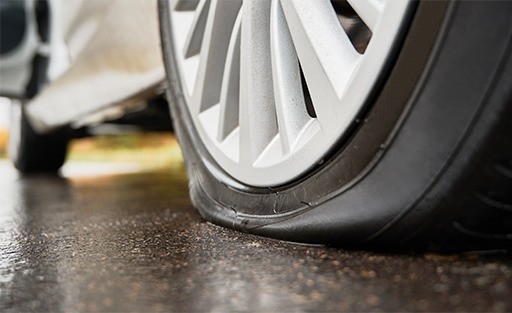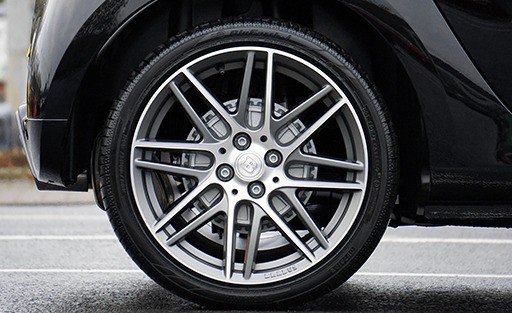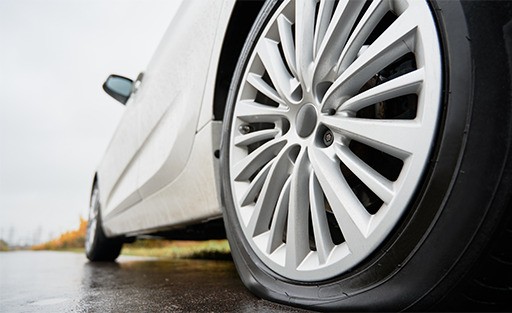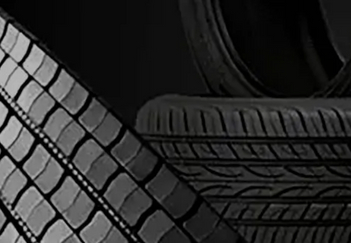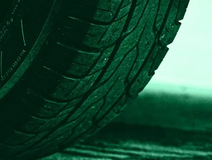
May 20, 2022
8 Things You Need To Know About Run-Flat Tyres
You’ve probably heard of run-flat tyres and their impressive ability to let you continue driving even when punctured. But are they worth the price? Tyroola walks you through the basics of run-flat tyres and everything else you need to know about them.
What Is A Run-Flat Tyre and How Does It Work?
Here’s an undisputed fact: your hardworking, conventional tyres, no matter how durable they are, can’t bear the weight of your vehicle on their own. The real deal-breaker is the air inside them. When your tyre breaks, air leaks out. Pretty soon, you have nothing but deflated rubber.
But with run-flat technology, you can still safely drive with a punctured tyre. It lets you go the extra mile—(about 50 miles to be exact, equivalent to 80 kilometres) even when they’re punctured. This happens because of any of these run-flat systems:
• Self-Supporting
The tyre maintains integrity even with reduced air pressure thanks to rubber inserts in cord layers or sidewall. However, with its reinforced sidewall, you may not notice that your tyre has lost air, prompting you to continue driving and worsening tyre damage. This is why installing a Tyre Pressure Monitoring System (TPMS) is essential, which we will discuss later.
• Support Ring
The weight-bearing responsibility rests on the wheel instead of the tyre in this system. A support ring typically made of hard rubber or another durable material is attached to the wheel, which supports the tread in case of a flat tyre.
• Self-Sealing
This type of run-flat is constructed similarly to conventional tyres. But the advantage it has over traditional tyres is that a sealant lines its insides. Once the object that caused the puncture is dislodged from the tyre, the sealant automatically fills up the hole. And because it’s built like a standard tyre, you can tell if air pressure is getting low, alerting you to take the necessary steps.
Also read Self-Repairing Tyres – The Tyre of the Future.
The Bane and Benefits of Run Flat Tyres
So, should you invest in these wonder tyres or continue the age-old tradition of carrying a spare? To help you decide, we’ve gathered the pros and cons of using run-flat tyres.
Pros
Top Convenience
This is the very reason why tyre manufacturers developed their run-flat line. Run-flat tyres were designed to save you from pulling over to the roadside to change your tyre or having your vehicle towed. With this, you can simply drive to a tyre shop near you.
Sure Safety
It’s dangerous to change tyres beside speeding traffic. And it’s equally risky to drive with flat tyres. Because run-flat tyres can function with low air pressure, you enjoy better steering, handling, and overall stability even with a blowout.
Extra Flexibility
Run-flat tyres work to give you more time and freedom to choose where you’ll have your tyre fixed. Aside from giving you peace of mind, they eliminate the hassle of lugging a spare tyre and extra tools, which only take up space and add to your vehicle load.
Cons
Limited Speed and Distance
Yes, you can still drive with your punctured run-flat tyre—but with these restrictions:
- You typically have to reduce your speed to below 80 kilometres per hour.
- You need to go easy on the accelerator and brakes. Despite the stability of run-flat tyres, it’s still wiser to drive safely to avoid accidents and further damage.
- How far can you drive on a run-flat tyre? The answer is 80 kilometres. Take note that this is a general estimate. Consult your vehicle manual for the exact capabilities of your vehicle and tyres.
Rigid Ride
Because some run-flat tyres have thicker sidewalls, they may lessen ride comfort. However, vehicle companies with Original Equipment Manufacturers (OEM) flat tyres resolve this issue with precisely calibrated suspension. Still, you may notice the difference if you’re used to smoother rides.
TPMS Requirement
To enjoy the full safety features of run-flat tyres, you should only attach them to vehicles equipped with a Tyre Pressure Monitoring System (TPMS). This dashboard display alerts you to a reduced air pressure of 25% or more. Imagine not knowing that your run-flat tyre is already punctured. We reckon you’d continue driving at high speeds, which is risky!
Also read Top 8 Causes of a Flat Tyre
How Can You Tell if You Have A Run-Flat Tyre?
The answer lies on your sidewall. But deciphering can be a bit tricky because each tyre manufacturer has its own code for run-flat tyres. Here’s a quick guide on the different acronyms:
Bridgestone- RFT (Run-Flat Tyre)
Continental- SSF (Self-Supporting Tyre)
Dunlop- DSST (Dunlop Self-Supporting Tyre)
Goodyear - EMT (Extended Mobility Technology)
Michelin- ZP (Zero Pressure)
Pirelli- Run Flat
8 Must-Know FAQs about Run Flat Tyres
We’ve gathered 7 of the most helpful FAQs about them to further boost your knowledge on run-flat tyres.
1. How much are run-flat tyres?
Because of their additional features, run-flat tyres are costlier than regular tyres by 50% to 100% depending on their size and brand. But the great news is that you can get them from Tyroola at more affordable prices and have them locally fitted.
2. Are run-flat tyres repairable?
Tyre manufacturers do not recommend repairing your run-flat tyre. Because of its complex design, a fitter won’t be able to accurately determine how much internal damage the tyre has sustained. Replacing it with a new flat tyre is the best option to ensure your safety.
3. Can I change my run-flat tyres to normal tyres?
Runflats usually come as OEM tyres, which means that the rides they come with were explicitly engineered to roll on this type of tyres. Aside from having TPMS, these vehicles’ suspensions were fine-tuned to match flat tyres. In short, experts advise against putting run-flat tyres on rims made for standard tyres, and the same goes for replacing runflats with regular tyres.
4. The car I bought came with OEM run-flat tyres. Why didn’t they give me a spare?
The run-flat advantage promises that you can still drive to your preferred tyre shop on a punctured tyre. Hence, you don’t need tyre-changing tools and a spare.
5. Can I mix run flats with regular tyres?
It’s advisable that you don’t. Combining conventional and ride flat tyres on one vehicle could compromise ride quality and safety since each tyre has different handling and performance capabilities.
6. Do run-flat tyres wear out faster?
A 2013 study from J.D. Power, a US-based consumer intelligence company, revealed that American consumers had to replace run-flats twice as fast as regular tyres. However, technology may have changed since then. Run-flat tyre construction is becoming more similar to conventional tyres’, which means their tread wear should be comparable. The most important thing is maintaining proper air pressure to prolong tyre life.
7. Are runflats fuel-efficient?
Heavier run-flat tyres typically consume more fuel. On the other hand, your vehicle won’t need to carry heavy tools and a spare. This ease in load also boosts your fuel economy.
Also read Save Cash with Fuel-Efficient Tyres.
8. How long have run-flat tyres been around?
You may be surprised to know that runflats have been around since the 1930s! Building on the technology used by trains, Michelin first introduced run-flat tyres for military vehicles and armoured bank cars.
The Verdict
Depending on your needs and preferences, run-flat tyres can be a must-have convenience or unnecessary luxury. The important thing is to look at both sides and choose the right tyre for your vehicle.

But we’re not going to lie. With technology on the rise and more consumers prioritising safety, run-flat tyres may soon be the standard instead of the special among modern vehicle models.
Want more tyre tips? Take a look at our blog and helpful guides.
